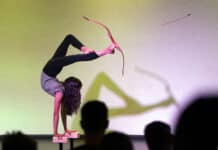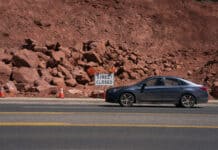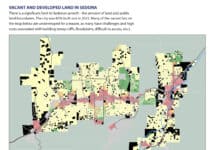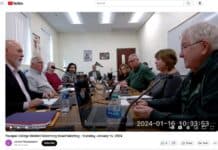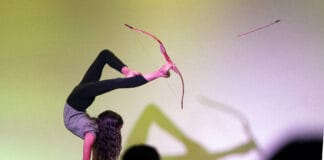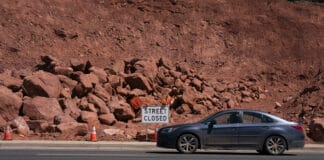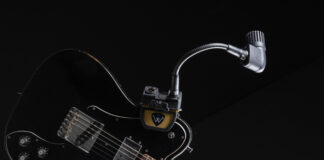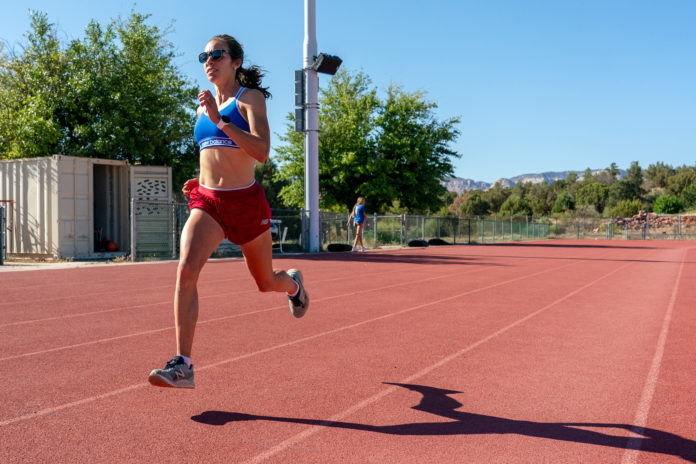
Athletes on the Sedona Red Rock High School track and field team have spent much of the 2021 season trying to qualify for the state meet. During some of their practices, the Scorpions have shared the track with athletes looking to get to and succeed on the biggest stage of them all — the Tokyo Olympics.
Distance runners from around the world are living in Flagstaff to help build their endurance at the higher altitude.
Then they come down to Sedona a few times a week to work on the anaerobic and track exercises.
“The theory behind altitude training is live high, train low,” said Mark Coogan, the Elite Coach for New Balance Track. “We come down here, it’s still 4,000 feet so it’s not low, but you can run faster here than Flag. The idea is you’re making new red blood cells. In running, everything is getting red blood cells to the muscles, because that’s where the oxygen is.”
On Friday, April 23, SRRHS track coach Harry Schneider estimated that there were close to 100 athletes on the track. That included Great Britain’s Mo Farah, a four-time Olympic Gold Medalist, who won both the men’s 5,000 and 10,000 meter races in the 2012 London Olymics and 2016 Rio Games.
With hotter weather and a meet in California the following day, there weren’t quite as many on Friday, May 7 — but there were still plenty of Olympians.
One of them was Abbey Cooper, who was a seven-time NCAA national champion while at Dartmouth. Under her maiden name, Abbey D’Agostino, Cooper competed in the 2016 Rio de Janeiro Olympics in the 5,000 meter race. She gained notoriety when, during one of the heats, Nikki Hamblin of New Zealand fell, causing Cooper to fall behind her. Cooper rose to her feet and rather than continue on with the race, helped Hamblin up.
When both tried to continue running, Cooper immediately fell to the ground in pain. Then, Hamblin helped her up. Both eventually continued on to finish the race and were granted spots in the final, though Cooper’s injuries were too severe to compete. The International Fair Play Committee awarded both Cooper and Hamlin with the Rio 2016 Fair Play Award.
Cooper is now training for the Olympic Trials, which will take place in Eugene, Oregon from Friday, June 18 to Sunday, June 27. She cited the strategic advantages of training in Sedona but also lauded Sedona for its aesthetics.
“I think sometimes we take for granted training in this beautiful place — that would be a bonus asset,” Cooper said. “But we mainly come here for the stimulus, the red blood cell benefits of living with minimal oxygen. We live up in Flag. We’re getting the benefits of being there for 12 plus hours a day. Then coming down to work on our speed, there’s a little more oxygen here.”
That sentiment was shared by Japan’s Suguru Osako, who’s already qualified for the Olympic Marathon in his home country.
“I brought my family a few weeks ago,” Osako said. “My brother loves Sedona and the Grand Canyon. It’s good for training and for the family.”
Thus far, there’s been little interaction between the Scorpions and Olympians, although Cooper did say that she’d love to talk with the high school athletes. Some of the Scorpions acknowledged being a little star struck. But while they haven’t chatted with the Olympians much, the high school athletes have taken the time to observe and study their techniques.
“For me it’s really inspiring to be able to watch their techniques and personally being able to learn from and witness really great runners every day,” SRRHS freshman Arabella Licher said. “I’m really grateful that we have an open track so that we get to experience that.”
Junior Shota Yabuuchi is originally from Japan, having moved to the United States with his family eight years ago. He was honored to get a chance to watch Osako train for the Olympic marathon.
“It’s so cool to see someone I’ve been watching for so long here and running on our track,” Yabuuchi said. “It’s a lot to learn. It is a privilege.”
His teammate, Carlos Villegas, agreed.
“It’s a privilege,” he said. “We’ve had Mo Farrah. We’ve had Suguru Osako from Japan. They come from everywhere. We’re lucky to have that. I don’t think any other schools have that. It’s pretty nice.”
That sentiment is shared by the athletes and their coaches.
“It’s the best place in the world to come,” Coogan said. “You get the nice weather, you get the nice facility. Sedona is pretty, open and welcoming to elite athletes. People feel comfortable and safe here. It’s just great.”


